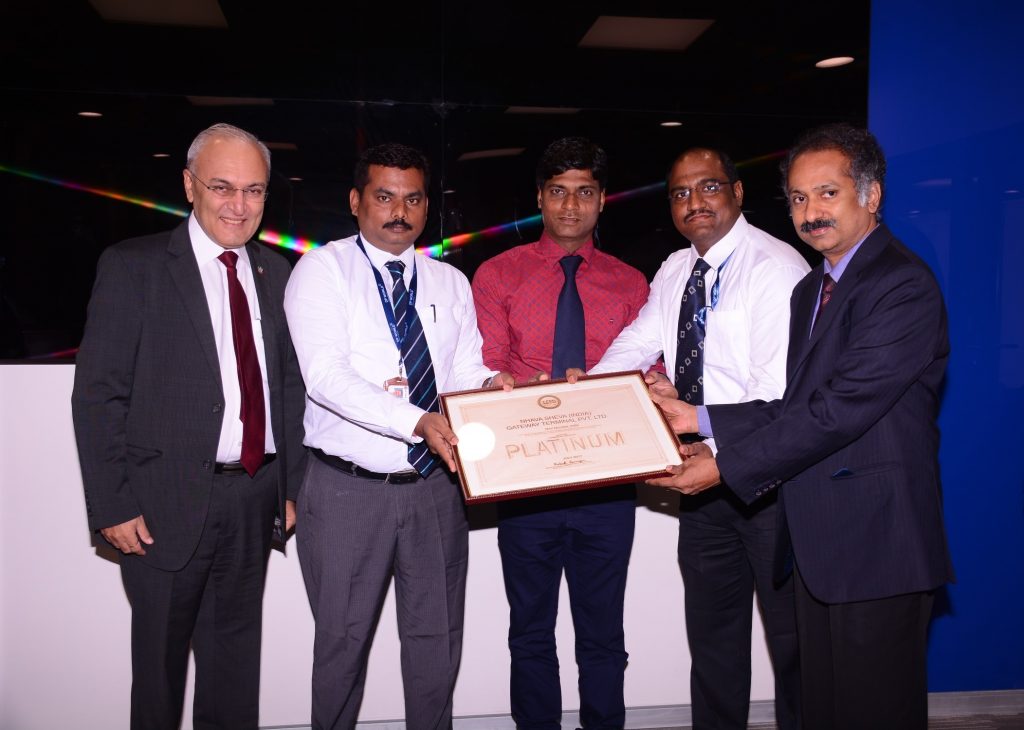[vc_row][vc_column][vc_column_text]
Global trade enabler DP World operated the Nhava Sheva (India) Gateway Terminal (NSIGT) has once again created another benchmark in the logistics sector in the country. The futuristic container handling facility Nhava Sheva (India) Gateway Terminal has been awarded the prestigious Leadership in Energy and Environmental Design (LEED) certification.
NSIGT is now LEED Platinum and was certified by Green Business Certification Inc. (GBCI) using the Commercial Interiors v2009 rating system. The terminal has a resource efficient building which utilises less water and energy, and reduces greenhouse gas emissions. It accomplished an impressive 89 out of 110 points in various environmental categories to receive this certificate.
Leaders around the world have made LEED the most widely used green building rating system. LEED-certified spaces reduce carbon emissions and contribute to a healthier environment for residents, workers and the larger community. India is ranked third on the U.S. Green Building Council’s (USGBC) ranking of top 10 countries for LEED-certified buildings. With the rapid economic growth trajectory which the country is on, green buildings play a vital role and provides a unique opportunity to design an environmentally friendly growth plan to create sustainable future.
Anil Singh, Senior Vice President and Managing Director, DP World Subcontinent said, “We at DP World are determined to undertake various measures which protect the environment and assist in building a sustainable future. We aim to ensure responsible use of natural resources, prevent pollution and take an industry leading position on environmental policies and practices.
At NSIGT, we have integrated a number of sustainable and energy efficient initiatives making it an exemplary model for future port developments in India. The terminal also aids in the Government’s National Action Plan on Climate Change (NAPCC), by implementing comprehensive strategies to clean up the air, water and land in India.”
NSIGT strives to reduce pollution and waste through advanced planning. The terminal functions on a transportation policy for building users or visitors which encourages the use of mass transit. This helps to decrease land development impacts from the use of automobiles. The terminal also has environmentally friendly equipment like the Electric Rubber Tyre Gantries (E-RTG’s) which run on electricity instead of diesel, reducing the terminal’s carbon footprint.
“NSIGT’s LEED certification demonstrates tremendous green building leadership,” said Mahesh Ramanujam, President and CEO, USGBC and GBCI. “LEED was created to make the world a better place and revolutionize the built environment by providing everyone with healthy, green and high performing buildings. NSIGT serves as a prime example of how the work of innovative building projects can use local solutions to make a global impact on the environment.”
NSIGT efficiently saves 40% of potable water by use of low flow plumbing fixtures, resulting in more than one lakh litre of water being saved annually. Treated water from the sewage treatment plant is used for 100% of landscaping water and flushing water demand further saving potable water.
NSIGT has 44% less total interior lighting power designed for the building than conventional buildings. The lighting design is optimised by installing active controls like daylight sensors and occupancy sensors. These strategies allow the terminal to save 16 million tonnes of CO2 annually. Also, a highly efficient Variable Refrigerant Flow (VRF) system has been employed for the air conditioning which aims to save around 24% cooling energy annually than a conventional system.
[/vc_column_text][/vc_column][/vc_row]








